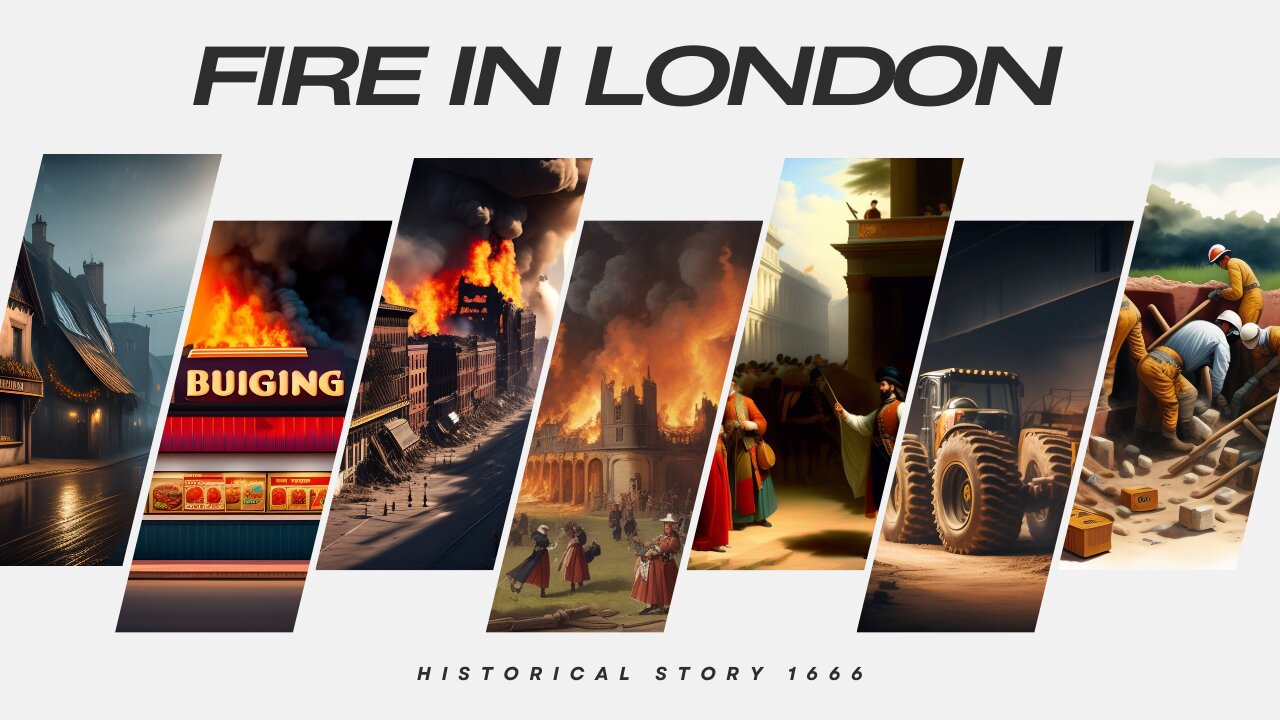Premium Only Content

Fire In London(1666)
In 1666, London witnessed one of the most devastating and infamous fires in its history, famously known as the Great Fire of London. This cataclysmic event took place over a span of four days, from September 2nd to September 6th, wreaking havoc on the city and leaving a lasting mark on its landscape and history.
The fire started on the night of September 2nd in a bakery on Pudding Lane, belonging to Thomas Farriner. The dry summer and strong winds allowed the fire to rapidly spread through the tightly packed, predominantly wooden structures of the city. The flames quickly consumed nearby buildings and jumped from house to house, creating an inferno that was almost impossible to contain.
Despite the efforts of the citizens and the primitive firefighting techniques of the time, the fire raged on. The blaze engulfed iconic landmarks such as the old St. Paul's Cathedral, reducing it to ashes and leaving a haunting silhouette against the fiery sky. The destruction was extensive, with an estimated 13,200 houses, 87 parish churches, and numerous public buildings reduced to ruins.
The devastation and chaos led to a mass exodus of panicked residents, desperate to escape the advancing flames and preserve their lives. It wasn't until September 6th that the fire was finally brought under control through the concerted efforts of the Londoners and the intentional demolition of buildings to create firebreaks.
The aftermath of the Great Fire of London was profound. The city had to grapple with the loss of its architectural heritage and infrastructure. As the ashes settled, plans were set in motion to rebuild the city. Sir Christopher Wren, among others, played a significant role in the redesign and reconstruction of London, resulting in a more modern and fire-resistant cityscape that we see today. The Great Fire of London ultimately reshaped the city's urban planning and architectural practices, leading to lasting changes in fire safety and building regulations.
-
 LIVE
LIVE
Lofi Girl
2 years agoSynthwave Radio 🌌 - beats to chill/game to
297 watching -
 4:30:47
4:30:47
BigN1ck
5 hours agoPhasmo and chill
33 -
 10:03
10:03
The Pascal Show
21 hours ago $6.01 earnedNEW STATEMENT! D.A. Breaks Silence Since Emmanuel Haro Presser... Trying To Shut Up Social Media?!
20.3K5 -
 LIVE
LIVE
LethalPnda
1 hour ago🔫 "Bullets, Bad Decisions & Farlight 84" I @Mystivis
77 watching -
 21:22
21:22
GritsGG
17 hours agoPlugged in MnK on Warzone & We Hit Shots!
171K5 -
 1:23:30
1:23:30
TruthStream with Joe and Scott
2 days agoJaime Harlow is back! #483
16.8K21 -
 1:32
1:32
Gaming on Rumble
2 days agoWhat is the Rumble Creator Program?!?! | Lvl UP
65.8K4 -
 10:34:09
10:34:09
Rallied
16 hours ago $20.89 earnedSolo Challenges ALL DAY
266K9 -
 1:39:43
1:39:43
Brandon Gentile
2 days agoTOP Money Expert: Bitcoin Will Keep Setting All-Time Highs Beyond $10m
22K3 -
 2:02:28
2:02:28
Badlands Media
1 day agoDevolution Power Hour Ep. 385: Trump “Death” Hoax, Supreme Court Tariffs Fight, and Tech-Military Ops
76K41